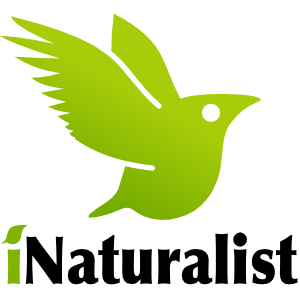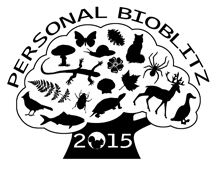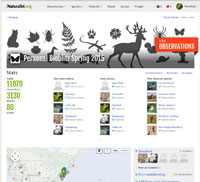What is going on? Why are we doing this?
Broad and detailed knowledge about species around us in everyday life has decreased among the public in the last decades. In general, we recognize fewer trees, edible plants and fungi, vertebrate and invertebrate animals, and spend less time on such topics in schools and universities. Even faculty and graduate students in ecology and evolution, the broadest fields of biology, find themselves unable to identify everyday species to genus, and may even be completely unaware of them. We want to counter such 'species blindness' among ourselves and our colleagues and friends and learn more about the biodiversity we see every day as researchers, consumers, and human beings.
The general goal is to discover, identify, and list as many species as possible in the world around you during a couple of months, from any species group, and at any place and time. We also want everybody to help each other learn to identify and discover new living things. The observation data we collect together can be used for research and will help everybody discover the real life that exist all around you, all the time, wherever you are, and, we promise you, you will see things you have never seen before!
Observation dates are 1 March - 15 May, 2015.
Who Can Participate?
You can be part of the Spring 2015 Personal Bioblitz if you fit one or more of these categories:
- Faculty at Rutgers University, NJ, USA
- Staff at Rutgers
- Graduate student at Rutgers
- Undergraduate student at Rutgers
- Rutgers Alumni
- Rutgers Continuing Education student
- Rutgers Extension
- Rutgers 4H member
- Retired faculty or staff from Rutgers
- Family team: one parent and child(ren) associated with Rutgers
- Relative of Rutgers employee or student (include Rutgers affiliate name on sign-up form)
- Friend of Rutgers employee (include Rutgers affiliate name on sign-up form
General Rules
- We expect all participants to be helpful to all participants, both in person and online on the iNaturalist website, and be courteous and play nice, especially in the comment fields on iNaturalist.
- Species observations start at 00:00 AM on March 1, and end at midnight (11:59 PM) on May 15, 2015.
- All observation data from the Bioblitz have to be uploaded by the end of the day on May 20, 2015.
- Observations follow the honor system; we trust you that you fill in the correct date and place and species (to the best of your knowledge), and all observation data is public.
- Your observations can be at the species level, but also at higher levels (Plant, Bird, etc.)
- Each species observation has to have a date and be added to a geographic map.
- Photos, when possible, are optional, but strongly encouraged as documentation of what you saw (we know, birds and some other animals are fast and furious, no photos needed for such things).
- Every counted observation at the end of the project has to have a taxonomic name (even if just a larger group name, like 'gilled fungus, Basidiomycetes' or 'snake, Serpentes'), has to have a date and place of location, and been seen and uploaded by you in person.
- Everybody in this project is a volunteer; we have no paid staff.
- The leadership team has the right to remove any observations and any person from the project that does not follow the rules.
Challenges and Prizes
- The Rutgers graduate student who observes the most species
- The Rutgers undergraduate student who observes the most species
- The participant that eats the most foraged, wild species (note, photos has to be included for these observations to count and a special list needs to be submitted)
- The parent and child team that observes the most species.
- The participant that observes the most different kinds of species.
- The participant that has the most species not seen by anybody else.
- That we all together see 4500 different species.
Which species and observations counts?
YES, Count it!
- You saw or heard the species. Even better, have a photo of it.
- Outdoor species, unassisted* (ex., birds, insects, mosses)
- Indoor species, unassisted* (ex., cockroaches, mice, bread mold)
- Remnants of once wild species (ex., antlers, roadkill, shells, fossils, potpourri, travel souvenirs) as long as unlabeled [mark the type of remnant in your iNaturalist observation notes field]
- Microscopic species (including bacteria and archaea), as long as actual organism is observed (not just its effect), and it wasn't ordered or kept in a lab as labeled culture
- Species as part of research projects (as long as unidentified specimens)
- Humans
- Invasive, parasitic, and alien species (weeds, pests, etc.)
NO, doesn't count!
- The species is labeled (the idea here is DISCOVERY)
- Using disease symptoms to identify a species (exception: galls and various tracks might be listed, but then only with a photo)
- Pets, supermarket produce, spices (anything sold and traded with a label on it; exception: wild species that inadvertently show up with such items are OK, like parasites in oysters or spiders in bananas)
- Species maintained in greenhouses, museums, zoos, aquaria, gardens, etc.
- Anything that can only securely be ID'd with molecular/ DNA data (if you can visually identify it to a higher-ranking group [class, family, etc.], then list it under the higher-ranking group's name)
- No viruses (sorry)
* Unassisted species are those that live without assistance from humans. Pets, houseplants, and planted crops are considered assisted if they rely on humans to survive. Feral cats and abandoned crop fields are unassisted since they no longer rely on humans.
Notes:
- iNaturalist focuses on wild species that survive without human assistance, so we will follow this general rule. You have to have seen or heard a species in person.
- If someone finds a species and shows it to you, then you can count it, as long as the species is not labeled with its species name and you really experience it.
- Taxa can be listed at any level, from phylum and down to species.
- If you are uncertain if your species should be counted, please contact the Leadership Team, and they will make a decision on a case-by-case basis.

How do I report and save species observations?
- Go to the iNaturalist website and open a free account (if you don't have one) and familiarize yourself with their very user-friendly website.
- Explore the 'get-started' webpage (link) on iNaturalist.
- If you want, download the Android or iOS app for your smartphone or tablet for easy observation reporting (links at the bottom of the iNaturalist webpage).
- If you don't have a digital camera of some kind, we suggest you get one. You can upload photos to iNaturalist and you can get help identify species from your photos.
- A sound recording device might be good if you want to learn bird songs and frog calls, etc.
How do I use iNaturalist for this project?
- All observations have to be uploaded to the iNaturalist website, and then added to the project called Personal Bioblitz Spring 2015.
- Observations can be uploaded even if they are not identified to species at first (you can change all identifications and other data for all uploaded records later).
- You can also keep a simple handwritten or computer-based list of observations, places and dates, and upload these observations to iNaturalist when you have the time. Instructions for upload and linking to photos are on the iNaturalist website.
- All observations that are uploaded to iNaturalist are available to the public and visible to everybody on the iNaturalist website.
- Observations follow the honor system, we trust you that you fill in the correct date and place and species (to the best of your knowledge). People may challenge and comment on your observations if they don't seem to have the correct date and place (to fix mistakes).
- Your observations might be used for research data by anybody in the world, so your observations add to the total knowledge for these species.
- Your observations can be at the species level, but also at higher levels (Plants, Birds, Ciliate, etc.)
- Each species observation has to have a date and geographic place (GPS location on a map). Locations can be open or obscured, but not hidden (contact the Leadership Team for advice on endangered species).
- Photos, when possible, are optional, but strongly encouraged as documentation of what you saw (we know, birds and some other animals are fast and furious, no photos needed for such things). It is easy to upload digital photos to iNaturalist either from your computer, or from your tablet/smartphone, or from a Flickr account.
- If you want help with an identification you have to have a photo and/or a sound recording of what you saw/heard.
- If you want people to agree with your species identifications (and get a Community ID confirmation on your observations) you should also help out with by commenting on others ID (to the best of your knowledge, of course). Only agree with other species ID's if you think they are correct based on your knowledge of that group. Don't assume they are correct, and then just agree because you know them. Some participants will have knowledge in many taxonomic groups, others have very little, so we do not expect that everybody can help out equally with species identifications. But everybody can learn and share knowledge to the best of their ability.
- Species identity is not needed at the time of upload to iNaturalist but you need have a good photo or sound recording of your species if you want help with its identification by the iNaturalist community (which includes people from all over the world, not just participants in this bioblitz).
- Unidentified species without photos or sound, or without date, or without locality will be deleted from our iNaturalist project at the end of the project, since the observation is incomplete. Your observation will still be on iNaturalist, just not in the Bioblitz project. (Unidentified species that has this information will stay, since they might be identified later)
- Feel free to add observations to your iNaturalist account before and after the Personal Bioblitz is going on (to start your life list!), but don't add them to the Personal Bioblitz project on iNaturalist.
How do I get help with identification?
- First, to be able to get help you will need one of these things: the species in question (alive or dead), a photo of it, or a sound recording.
- You can upload a photo or sound online and add it to the Please ID group on iNaturalist, to see if someone can help you identify it. You can also add it to the Personal Bioblitz project on iNaturalist, where participants might be able to help you.
- Contact taxonomic expertise, anywhere where you can find it (Facebook groups, researchers, societies and organizations).
- We will also post recommended websites and literature for species identification on the project website.
Who runs this project? Who do I contact?
The project is led by Dr. Lena Struwe and a Leadership Team consisting of graduate students at School of Environmental and Biological Sciences, Rutgers University:
- Natalie Howe, natalie.howe@rutgers.edu
- Ivelisse Irizarry, iveliz@scarletmail.rutgers.edu
- Ariel Kruger, ariel.kruger@rutgers.edu
- Nicholas Lorusso, nsl24@scarletmail.rutgers.edu
- Nicholas Pollock, nbp48@scarletmail.rutgers.edu
- Dr. Lena Struwe, struwe@aesop.rutgers.edu
This project is run by Rutgers University in collaboration with iNaturalist (California Academy of Sciences).


For questions or comments about this site, contact .




